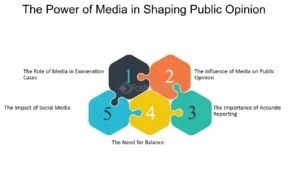Media relations play a pivotal role in shaping public perception and influencing how organizations are viewed by the public. Effective media relations strategies help manage an organization’s image, handle crises, and build strong relationships with the media. Here’s how media relations contribute to shaping public perception.

Establishing a Positive Image
A key aspect of media relations is establishing and maintaining a positive image for an organization. By engaging with media outlets and journalists, organizations can share their successes, innovations, and positive news. Regularly providing media with relevant and compelling stories helps build a favorable image and reinforces a positive public perception.
Managing Crisis Communication
During a crisis, media relations are crucial for controlling the narrative and managing public perception. Effective crisis communication involves promptly addressing the situation, providing accurate information, and demonstrating transparency. By working closely with the media, organizations can present their side of the story and mitigate the impact of negative news on their reputation.
Building Trust and Credibility
Strong media relations help build trust and credibility with the public. By consistently delivering honest, accurate, and valuable information, organizations can establish themselves as reliable sources of information. Positive media coverage and endorsements from reputable journalists enhance credibility and strengthen public trust.
Influencing Public Opinion
Media coverage significantly influences public opinion. Through strategic media relations, organizations can shape how their messages are perceived by the public. By pitching stories that highlight their achievements, values, and contributions, organizations can influence the narrative and align public perception with their goals and objectives.
Enhancing Brand Visibility
Effective media relations increase brand visibility and awareness. Regular media coverage, including news articles, interviews, and features, keeps the organization in the public eye. By securing placements in influential media outlets, organizations can reach a broader audience and enhance their brand presence.
Managing Media Relationships
Building and maintaining strong relationships with journalists and media professionals is essential for successful media relations. Engaging with media representatives through networking events, press conferences, and personalized pitches helps foster positive relationships. Strong media connections increase the likelihood of favorable coverage and ensure that the organization’s messages are effectively communicated.
Crafting Compelling Messages
Media relations involve crafting compelling and newsworthy messages that capture media attention. Developing well-written press releases, media kits, and pitch materials is crucial for conveying key messages. By presenting information in a clear, engaging, and relevant manner, organizations can increase their chances of securing media coverage and shaping public perception.
Monitoring and Measuring Impact
Monitoring media coverage and measuring its impact on public perception is essential for evaluating the effectiveness of media relations efforts. Use media monitoring tools to track mentions, analyze sentiment, and assess the reach of your coverage. Understanding how media coverage influences public opinion helps refine strategies and improve future media relations activities.
Addressing Negative Coverage
Addressing negative media coverage promptly and effectively is crucial for managing public perception. Respond to negative stories with accurate information, clarification, or counterpoints. Handling negative coverage professionally and constructively helps mitigate damage to your reputation and demonstrates a commitment to transparency and accountability.
Leveraging Media Opportunities
Take advantage of media opportunities to showcase your organization’s expertise and thought leadership. Participate in interviews, contribute op-eds, and engage in media events to share insights and perspectives. Leveraging these opportunities helps position your organization as a leader in its field and influences how it is perceived by the public.
Media relations are a powerful tool for shaping public perception. By establishing a positive image, managing crises, building trust, and enhancing brand visibility, organizations can effectively influence how they are viewed by the public. Strong media relationships, compelling messaging, and strategic media engagement contribute to a favorable and impactful public perception.




